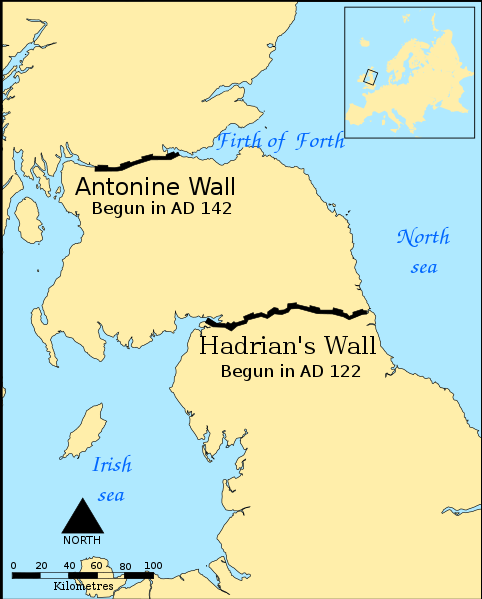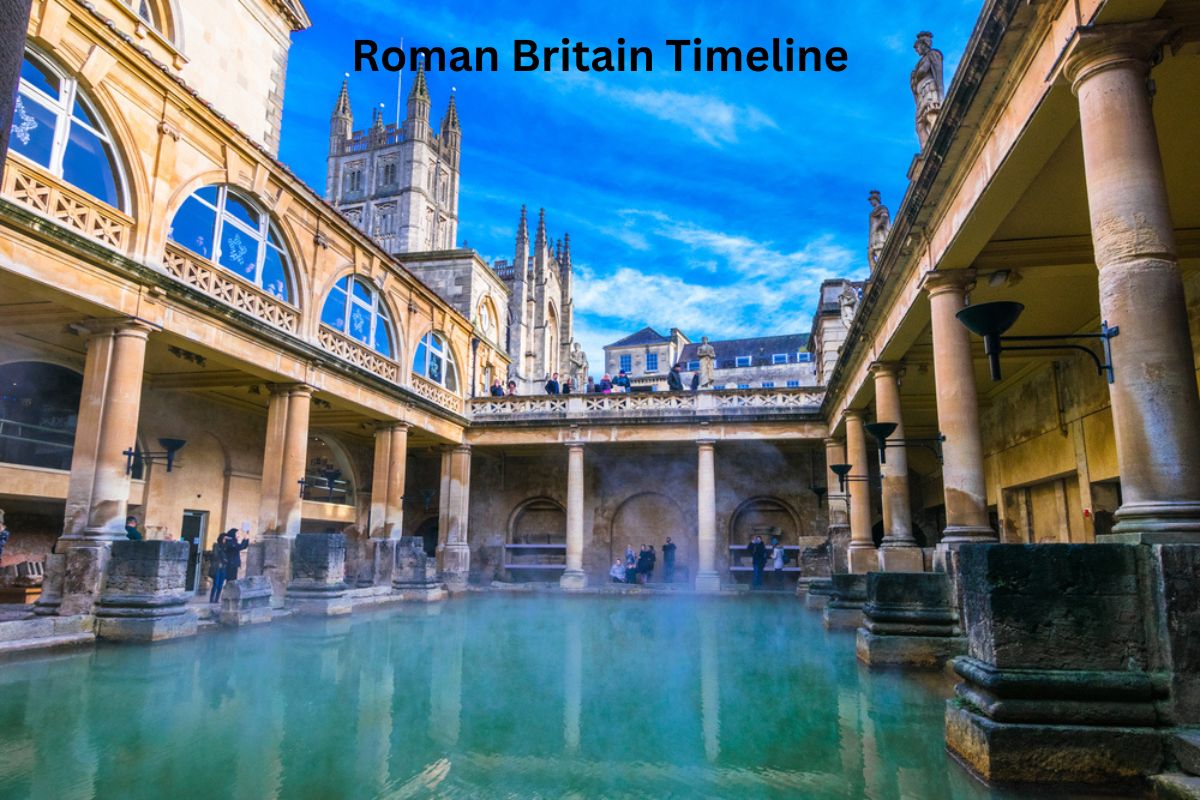Roman Britain refers to a significant period in the history of the British Isles when the island of Great Britain was under the dominion of the Roman Empire.
This era, lasting from 43 AD to the early 5th century AD, was marked by Roman conquest, governance, and cultural influence.
The Romans established control, constructed fortifications like Hadrian’s Wall, and introduced Romanization to the region, leaving a lasting impact on the British landscape and culture.
However, it was also a time of challenges, including uprisings and economic decline, culminating in the eventual withdrawal of Roman authority and the subsequent influx of various groups, shaping the future of the British Isles.
This period of Roman rule in Britain holds a pivotal place in the island’s rich and complex history.
| Year | Event |
|---|---|
| 43 AD | Roman Invasion led by Claudius |
| Late 1st C. AD | Roman control established in southern Britain |
| Late 1st C. AD | Construction of Hadrian’s Wall |
| Late 1st C. AD | Boudica’s Rebellion |
| Early 2nd C. AD | Romanization and infrastructure development |
| 122 AD | Hadrian’s Wall built |
| Late 2nd C. AD | Construction of the Antonine Wall |
| 3rd C. AD | Economic decline and northern raids |
| 4th C. AD | Constantine the Great proclaimed emperor |
| Early 5th C. AD | Roman withdrawal from Britain |
| 410 AD | Traditional end of Roman rule in Britain |
| Subsequent | Invasions and settlements by various groups |
Timeline of Roman Britain
43 AD – Roman Invasion led by Claudius:
In the year 43 AD, the Roman Emperor Claudius sanctioned a momentous military campaign, marking the onset of Roman dominion over the island of Britain.
Under the command of General Aulus Plautius, Roman forces embarked on this audacious venture by landing in the southeastern region of Britain, specifically in Kent.
Claudius’s decision to invade Britain was fueled by political turmoil within the island and the perceived necessity of bringing it into the Roman fold.
Notably, Emperor Claudius himself made a triumphant visit to Britain after the initial phases of conquest, further cementing the island’s incorporation into the Roman Empire.

Late 1st Century AD – Roman Control established in southern Britain
Over the ensuing decades following the initial invasion, the Romans systematically extended their authority over large swathes of southern Britain.
Prominent urban centers such as Colchester, known as Camulodunum in Roman times, and London, referred to as Londinium, came under Roman governance.
To foster connectivity and facilitate governance, the Romans undertook the creation of an intricate network of roads, forts, and settlements. This infrastructure not only enabled efficient trade and communication but also played a pivotal role in disseminating Roman culture and values throughout the region.
Consequently, Romanization took root, with the local populace adopting Roman customs, technology, and the Latin language.
Late 1st Century AD – Construction of Hadrian’s Wall
In the latter part of the 1st century AD, specifically around 122 AD, Emperor Hadrian issued orders for the construction of Hadrian’s Wall.
This monumental undertaking aimed at erecting a formidable defensive barrier in northern Britain to deter incursions from the northern tribes, particularly the Picts.
The wall, which stretched from the east coast to the west coast, served as the northernmost boundary of Roman Britain.
Comprising forts, milecastles, and other defensive installations, Hadrian’s Wall was instrumental in safeguarding Roman control in the northern reaches of the province.
Late 1st Century AD – Boudica’s Rebellion
In 60-61 AD, a significant turning point in Roman Britain occurred with the eruption of Boudica’s Rebellion. Boudica, the queen of the Iceni, a Celtic tribe inhabiting eastern Britain, spearheaded a formidable uprising against Roman rule.
Her forces laid siege to and razed several Roman settlements, most notably the provincial capital, Camulodunum (modern-day Colchester). The rebellion stemmed from the perceived mistreatment and oppression of local tribes by Roman authorities.
However, Roman governor Suetonius Paulinus ultimately quelled the revolt, reestablishing a semblance of stability but leaving a lasting imprint on the historical narrative of Roman Britain.

Early 2nd Century AD – Romanization and infrastructure development
During the early 2nd century AD, the Romanization of southern Britain continued to evolve. Roman influence permeated all aspects of life in this region.
Major urban centers like Londinium (modern-day London), Verulamium (St. Albans), and Eboracum (York) thrived with Roman architecture, markets, temples, and other public buildings.
The Romans brought advanced infrastructure to Britain, including a vast network of well-constructed roads like Ermine Street and Watling Street, which greatly enhanced trade and communication. In the countryside, villas began to dot the landscape, showcasing Roman affluence and lifestyle.
This period marked a profound transformation of southern Britain, as the Roman way of life became increasingly ingrained in its culture and society.
122 AD – Hadrian’s Wall built
Emperor Hadrian’s Wall, constructed in the early 2nd century AD, stands as an enduring testament to Roman engineering and military prowess.
Stretching approximately 73 miles (117 km) across the narrowest part of Britain, from the North Sea in the east to the Irish Sea in the west, Hadrian’s Wall was conceived as a formidable defensive barrier. It served the primary purpose of safeguarding Roman Britain from the threat of northern tribes, most notably the Picts.
This monumental structure featured a well-planned system of forts, milecastles, and turrets, strategically positioned along its length to house Roman soldiers and maintain control over the northern border.
Late 2nd Century AD – Construction of the Antonine Wall
In the late 2nd century AD, around 142 AD, the Roman Emperor Antoninus Pius initiated the construction of the Antonine Wall, located further north in Scotland. This decision represented a temporary expansion of the Roman frontier.
The Antonine Wall, stretching approximately 39 miles (63 km), was characterized by a series of forts and outposts built along its length.
However, it proved less enduring than Hadrian’s Wall and was eventually abandoned in favor of the latter, marking a pivotal moment in the defense strategy of Roman Britain.
3rd Century AD – Economic decline and northern raids
The 3rd century AD was marked by challenges and hardships for Roman Britain. The broader Roman Empire experienced periods of political instability and economic decline, which had repercussions in Britain. The allocation of resources to the province became strained.
Moreover, the northern tribes, including the Picts and Irish, posed a persistent threat. They launched frequent raids into Roman Britain, placing significant pressure on the defenses of Hadrian’s Wall.
These incursions, coupled with the economic challenges, led to periods of turmoil and decline within the province. Maintaining Roman control over Britain during this era proved increasingly challenging as the empire grappled with internal and external issues.
4th Century AD – Constantine the Great
During the 4th century AD, a figure of immense historical significance emerged in Roman Britain. Constantine, initially proclaimed emperor in Britain in 306 AD, would later become known as Constantine the Great.
His ascension to power marked a pivotal moment in the history of the Roman Empire and had a lasting impact on the Christianization of the Roman world.
Constantine’s rule was instrumental in the adoption of Christianity as the official religion of the empire, a transformation that significantly altered the religious and cultural landscape of the Roman world.
His proclamation as emperor in Britain underscored the region’s continued importance within the Roman Empire.
Early 5th Century AD – Roman Withdrawal from Britain
In the early 5th century AD, the Roman Empire faced mounting challenges from external threats and internal divisions. As a result, Roman authorities decided to withdraw their troops and support from Britain.
This withdrawal marked a pivotal moment in the history of the island, as it effectively signaled the end of Roman rule in the province.
The reasons for this withdrawal were multifaceted and included the need to reallocate resources to defend other parts of the empire and the deterioration of central authority within the Roman government.
The departure of Roman legions left a significant power vacuum in Britain, setting the stage for subsequent invasions and migrations by various groups.
410 AD – Traditional End of Roman Rule in Britain
The traditional date marking the end of Roman rule in Britain is 410 AD. In this year, the Roman government officially withdrew its support from the province.
This event was influenced by the ongoing challenges facing the Roman Empire, including the sack of Rome by the Visigoths in 410 AD. As a result, Roman Britain was left to fend for itself, no longer receiving military protection or governance from the Roman authorities.
While the Roman influence had waned over the years leading up to this point, 410 AD is often regarded as a symbolic end to the Roman era in Britain.
Subsequent Invasions and Settlements
Following the Roman withdrawal from Britain, the island became a target for various groups seeking to establish control or settlements.
Among the notable groups were the Anglo-Saxons, Jutes, and Vikings, who arrived in waves during the post-Roman period. These migrations and invasions played a crucial role in shaping the future kingdoms and societies of Britain, ultimately giving rise to the early medieval period.
The departure of the Romans marked the beginning of a new chapter in British history, characterized by the fusion of Roman, Celtic, and incoming cultures, which would evolve into the distinct identities of the nations within the British Isles.
